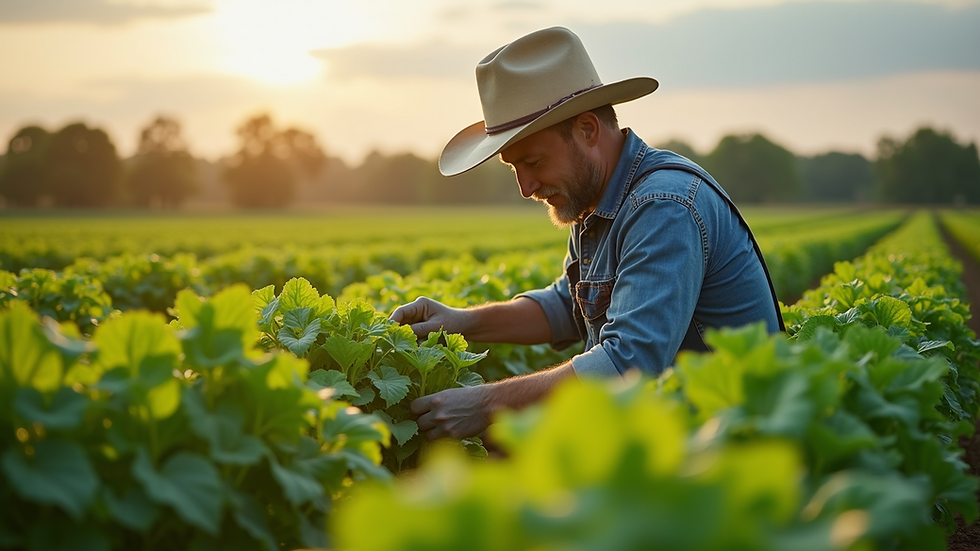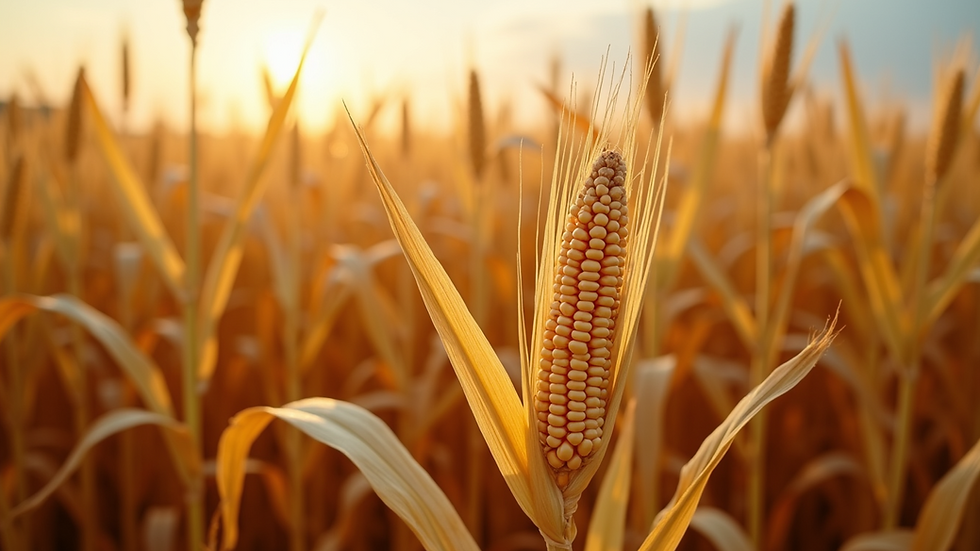Sustainable Farming Practices for Modern Agriculture
- caseytodd577
- Sep 22
- 5 min read
In today's world, the need for sustainable farming practices has never been more urgent. As the global population continues to grow, the demand for food increases. However, traditional farming methods often lead to environmental degradation, soil depletion, and loss of biodiversity. This blog post will explore various sustainable farming practices that can help modern agriculture thrive while protecting our planet.
Sustainable farming is not just a trend; it is a necessity. By adopting these practices, farmers can produce food in a way that is environmentally friendly, economically viable, and socially responsible. Let's dive into some of the most effective sustainable farming practices that are shaping the future of agriculture.
Crop Rotation
Crop rotation is one of the oldest and most effective sustainable farming practices. It involves alternating the types of crops grown in a particular area over time. This method helps to maintain soil fertility, reduce pest and disease pressure, and improve crop yields.
For example, a farmer might plant corn one year and then switch to soybeans the next. Corn depletes certain nutrients from the soil, while soybeans can replenish them. This practice not only enhances soil health but also reduces the need for chemical fertilizers.
Crop rotation can also disrupt the life cycles of pests and diseases. By changing the crops grown in a field, farmers can prevent pests from becoming established and reduce the need for pesticides.
Cover Cropping
Cover cropping is another essential practice in sustainable agriculture. This involves planting crops that are not intended for harvest, such as clover or rye, during the off-season. These cover crops provide numerous benefits, including:
Soil erosion prevention: The roots of cover crops help hold the soil in place, reducing erosion caused by wind and water.
Nutrient enhancement: Some cover crops, like legumes, can fix nitrogen in the soil, improving its fertility.
Weed suppression: Cover crops can outcompete weeds for resources, reducing the need for herbicides.
Farmers who implement cover cropping often see improved soil health and increased yields in their main crops.
Integrated Pest Management (IPM)
Integrated Pest Management (IPM) is a holistic approach to managing pests that combines various strategies. Instead of relying solely on chemical pesticides, IPM focuses on prevention and control through a combination of methods. These may include:
Biological control: Introducing natural predators or parasites to control pest populations.
Cultural practices: Adjusting planting times or crop varieties to reduce pest pressure.
Mechanical control: Using traps or barriers to keep pests away from crops.
By using IPM, farmers can reduce their reliance on harmful chemicals, protect beneficial insects, and promote a healthier ecosystem.
Agroforestry
Agroforestry is a sustainable farming practice that integrates trees and shrubs into agricultural landscapes. This method offers numerous benefits, including:
Biodiversity enhancement: Trees provide habitat for wildlife and promote a diverse ecosystem.
Soil improvement: Tree roots help prevent soil erosion and improve soil structure.
Microclimate regulation: Trees can provide shade and reduce temperature extremes, benefiting crops.
Farmers who practice agroforestry often find that their land becomes more resilient to climate change and extreme weather events.
Organic Farming
Organic farming is a well-known sustainable practice that avoids synthetic fertilizers and pesticides. Instead, it relies on natural methods to enhance soil fertility and control pests. Some key principles of organic farming include:
Crop diversity: Growing a variety of crops to promote biodiversity and reduce pest pressure.
Natural fertilizers: Using compost, manure, and cover crops to enrich the soil.
Pest management: Employing natural predators and organic pesticides to control pests.
Organic farming not only benefits the environment but also produces healthier food for consumers. Many people are willing to pay a premium for organic products, making it a viable option for farmers.
Water Conservation Techniques
Water is a precious resource, and sustainable farming practices must prioritize its conservation. Here are some effective techniques:
Drip irrigation: This method delivers water directly to the plant roots, reducing waste and evaporation.
Rainwater harvesting: Collecting and storing rainwater for irrigation can help farmers reduce their reliance on groundwater.
Soil moisture management: Using mulch and cover crops can help retain soil moisture and reduce the need for irrigation.
By implementing these water conservation techniques, farmers can ensure that they use water efficiently and sustainably.
Precision Agriculture
Precision agriculture uses technology to optimize farming practices. This approach involves collecting data on soil health, crop performance, and weather conditions to make informed decisions. Some key components of precision agriculture include:
GPS technology: Farmers can use GPS to map their fields and monitor crop health.
Drones: Drones can provide aerial views of fields, helping farmers identify problem areas.
Soil sensors: These devices can measure soil moisture and nutrient levels, allowing for targeted interventions.
By using precision agriculture, farmers can reduce waste, increase efficiency, and improve yields while minimizing their environmental impact.
Community Supported Agriculture (CSA)
Community Supported Agriculture (CSA) is a model that connects farmers directly with consumers. In a CSA, consumers purchase a share of the farm's harvest in advance, providing farmers with upfront capital. This model offers several benefits:
Fresh produce: Consumers receive fresh, seasonal produce directly from the farm.
Support for local farmers: By purchasing shares, consumers help sustain local agriculture.
Reduced food miles: CSA reduces the distance food travels, lowering carbon emissions.
CSAs foster a sense of community and encourage consumers to support sustainable farming practices.
The Role of Technology in Sustainable Farming
Technology plays a crucial role in advancing sustainable farming practices. Innovations such as:
Biotechnology: Developing crops that are resistant to pests and diseases can reduce the need for chemical inputs.
Data analytics: Analyzing data can help farmers make better decisions about planting, irrigation, and pest management.
Mobile apps: Farmers can access information and resources on sustainable practices through mobile applications.
By embracing technology, farmers can enhance their sustainability efforts and improve their overall productivity.
The Future of Sustainable Farming
The future of sustainable farming looks promising. As more farmers adopt these practices, the agricultural landscape will continue to evolve. The benefits of sustainable farming extend beyond the farm gate, impacting communities, economies, and the environment.
Consumers are becoming more aware of the importance of sustainable practices. They are increasingly seeking out products that are grown responsibly. This shift in consumer behavior is encouraging farmers to adopt sustainable methods.
Moreover, governments and organizations are recognizing the need for sustainable agriculture. They are providing support and resources to help farmers transition to more sustainable practices. This collaboration between farmers, consumers, and policymakers is essential for creating a sustainable food system.
Embracing Change for a Sustainable Future
Sustainable farming practices are not just beneficial for the environment; they are essential for the future of agriculture. By adopting methods such as crop rotation, cover cropping, and integrated pest management, farmers can produce food in a way that is both productive and environmentally friendly.
As we move forward, it is crucial for all stakeholders—farmers, consumers, and policymakers—to work together. By embracing sustainable practices, we can ensure a healthy planet for future generations. The journey toward sustainable agriculture is ongoing, but with commitment and innovation, we can create a brighter future for our food systems.









Comments